Marrying Vega and Zen: The AMD Ryzen 5 2400G Review
by Ian Cutress on February 12, 2018 9:00 AM ESTBenchmarking Performance: CPU Legacy Tests
Our legacy tests represent benchmarks that were once at the height of their time. Some of these are industry standard synthetics, and we have data going back over 10 years. All of the data here has been rerun on Windows 10, and we plan to go back several generations of components to see how performance has evolved.
All of our benchmark results can also be found in our benchmark engine, Bench.
3D Particle Movement v1
3DPM is a self-penned benchmark, taking basic 3D movement algorithms used in Brownian Motion simulations and testing them for speed. High floating point performance, MHz and IPC wins in the single thread version, whereas the multithread version has to handle the threads and loves more cores. This is the original version, written in the style of a typical non-computer science student coding up an algorithm for their theoretical problem, and comes without any non-obvious optimizations not already performed by the compiler, such as false sharing.
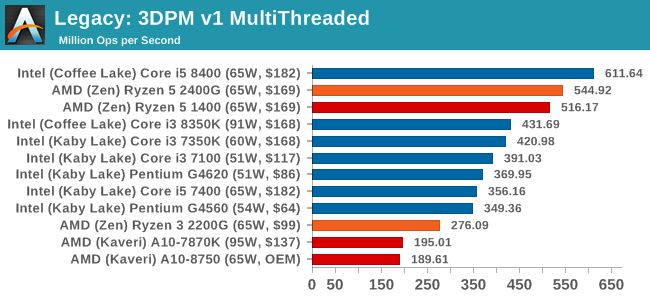
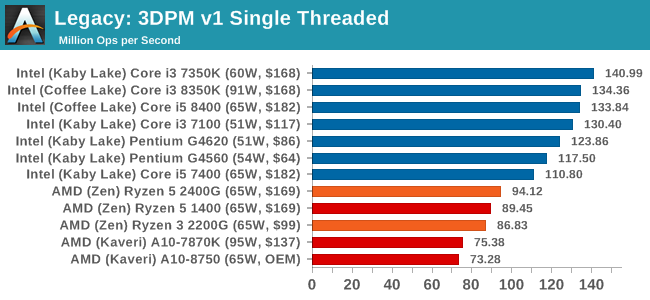
CineBench 11.5 and 10
Cinebench is a widely known benchmarking tool for measuring performance relative to MAXON's animation software Cinema 4D. Cinebench has been optimized over a decade and focuses on purely CPU horsepower, meaning if there is a discrepancy in pure throughput characteristics, Cinebench is likely to show that discrepancy. Arguably other software doesn't make use of all the tools available, so the real world relevance might purely be academic, but given our large database of data for Cinebench it seems difficult to ignore a small five minute test. We run the modern version 15 in this test, as well as the older 11.5 and 10 due to our back data.

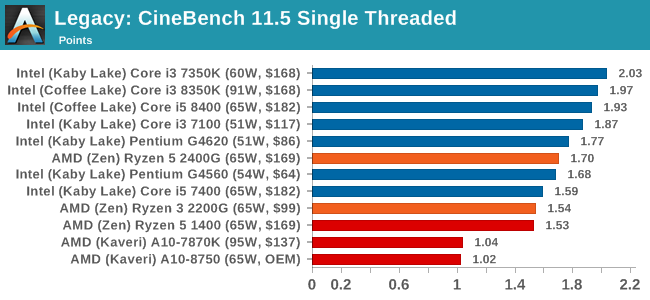
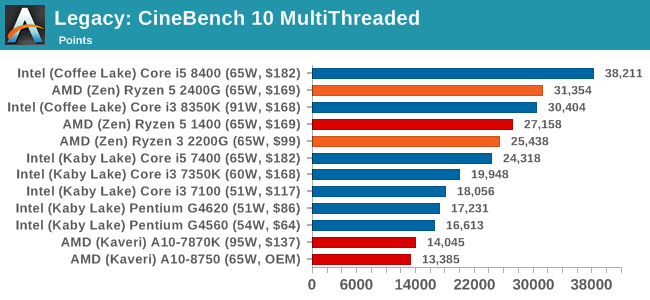
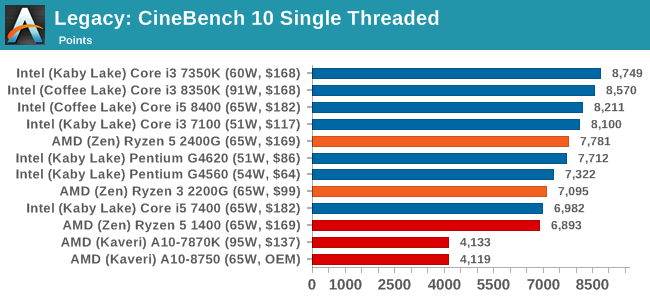
x264 HD 3.0
Similarly, the x264 HD 3.0 package we use here is also kept for historic regressional data. The latest version is 5.0.1, and encodes a 1080p video clip into a high quality x264 file. Version 3.0 only performs the same test on a 720p file, and in most circumstances the software performance hits its limit on high end processors, but still works well for mainstream and low-end. Also, this version only takes a few minutes, whereas the latest can take over 90 minutes to run.
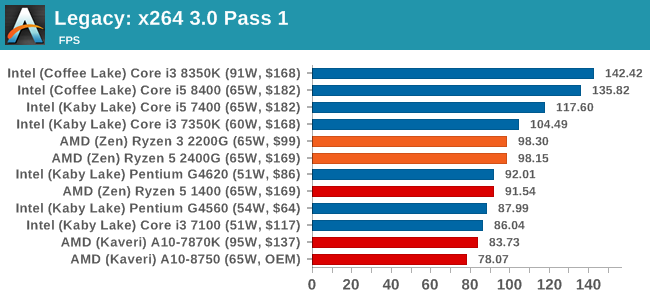
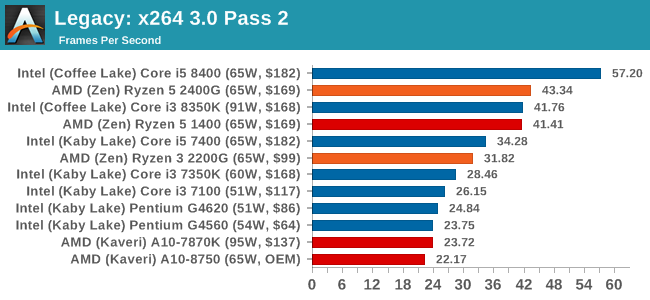










177 Comments
View All Comments
Cooe - Monday, February 12, 2018 - link
Here's an article with a bunch of graph's that include the i7-5775C if you'd prefer to peep this instead of that vid.https://hothardware.com/reviews/amd-raven-ridge-ry...
Cooe - Monday, February 12, 2018 - link
Your i7-5775C isn't even as fast as an old Kavari A10 w/ 512 GCN2 SP's (it's close, but no cigar), so vs Vega 8 & 11 it gets it's ass absolutely handed to it... like by a lot - https://youtu.be/sCWOfwcYmHIjrs77 - Monday, February 12, 2018 - link
When I look at all the available benchmarks so far, then there's nothing this chip can play, that I can't allready play with my 5775C. 1080p with medium settings is no problem for most games like Overwatch, Borderlands, WoW, Diablo, etc. So if the 2400G can't run them at high settings, like it looks like, then I see no reason to call it the King of integrated graphics really.Holliday75 - Monday, February 12, 2018 - link
How on God's green Earth can you compare a $600+ CPU versus the 2400g? The whole point of iGPU is to be cheap. The 2400g out performs a CPU that costs over 3x as much in the exact area this chip was built for. Low end gaming.jrs77 - Monday, February 12, 2018 - link
$600 ?!? I paid €400 for my 5775C incl 24% VAT. So that would be $300 then.And again. I can play games in 1080p with low to medium settings just fine, so I don't see a reason to upgrade.
acidtech - Monday, February 12, 2018 - link
Need to check your math. €400 = $491.jrs77 - Tuesday, February 13, 2018 - link
Back when I bought it, the Euro and the Dollar where allmost 1:1, and to get the Dollar-price you need to subtract the 24% VAT I pay over here, so yeah, back then it was around $300. Hell, the intel list-price was $328.SaturnusDK - Wednesday, February 14, 2018 - link
So what you're saying is that you paid twice the money to have under half the graphics performance and 20% lower CPU performance of a 2400G.Graphics-wise the 5775C was pretty bad and got beaten by ALL AMD APUs at the time. It was close but it was never very good. Time has not been kind to it.
SSNSeawolf - Monday, February 12, 2018 - link
I noticed with some sadness that there's no DOTA 2 benchmarks. Was this due to time constraints or unforeseen issues? I'm crossing my fingers that DOTA 2 hasn't been dropped for good as it's a great benchmark for silicon such as this, though the other benchmarks of course do let us ballpark where it would land.Ian Cutress - Monday, February 12, 2018 - link
That's in our GPU reviews; different editors with different benchmark sets. We're looking at unifying the two.